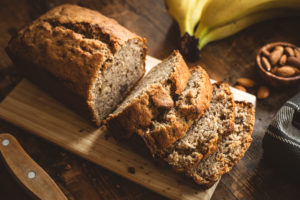 Eat more whole grains is one of the most common pieces of nutritional advice. Whole grains are high in fiber and other nutrients that are associated with a lower risk of heart disease, type-2 diabetes, obesity, and more.
Eat more whole grains is one of the most common pieces of nutritional advice. Whole grains are high in fiber and other nutrients that are associated with a lower risk of heart disease, type-2 diabetes, obesity, and more.
But do you know how to buy a whole grain item? Does “multigrain” mean whole grain? And are all whole grain products created equally?
Advertisement
The answers might surprise you.
First, a few quick facts about whole grains. Whole grains are made of three main components: the bran, germ, and endosperm. The bran and germ are the most nutritious parts that are likely responsible for the fiber and effects on blood pressure, cholesterol, digestion, and more.
As far as whole grains go, oats and brown rice are completely intact. Quinoa and amaranth are safe bets, too. Whole grain flour is milled in a way that retains the three parts even though they are not intact.
One full serving of whole grains is 16 grams. Recommendations are that you should eat 48 grams—three servings—of whole grains per day for health benefits. So, how do you know how much you’re getting if this information is not on nutrition labels?
The easiest way is to look for the golden stamp of the Oldways Whole Grains Council, a consumer advocacy group. They have three tiers of whole grains to help customers understand what they are getting:
100% Whole Grain: The product features 16 g of whole grains per serving and is entirely made from whole grain.
50% Whole Grain: At least half of each serving is whole grain. This means there are 8 grams of whole grain per serving.
Whole Grain: This means that less than half of a serving is made from whole grain, yet there is still at least 8 grams per serving. Proportionally, though, there are more refined grains than whole.
Advertisement
Of course, not all products get the stamp. To assess whole grain content, pay attention to where they are listed on the ingredients list. If whole grains are near the top, then there is likely a decent supply.
Lastly, don’t be fooled by certain keywords that sound good but don’t indicate whether or not a product is whole grain. These words or phrases include “multigrain,” “made with whole grain,” “stone-ground,” and “organic.”
These terms don’t tell you anything about the whole grain content, specifically, so they should not be relied on. The last thing you want to do is buy something detrimental when you think it’s healthy.
